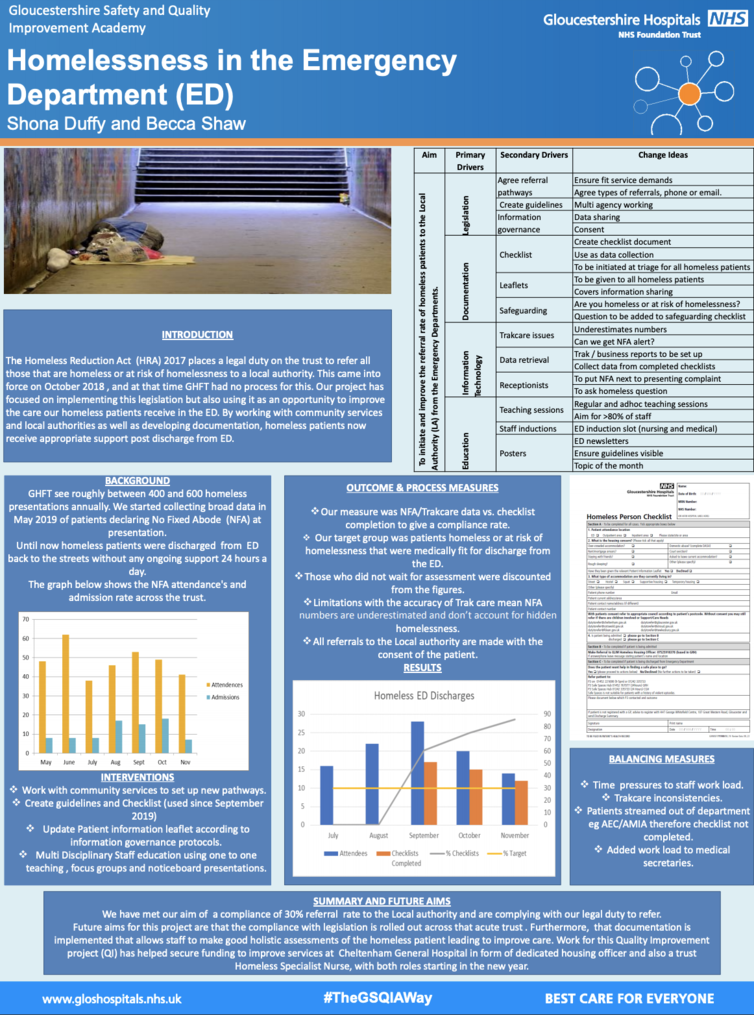Background & Problem: This project was focused in the Emergency Departments (ED’s) in both sites of the trust (CGH &GRH). As a trust we see approximately 400 and 600 homeless presentations to our ED’s annually. In 2018 the Homeless Reduction Act came into force placing a legal duty for the trust to refer all those that are homeless or at risk of homelessness to a local authority. At the time the trust was not meeting this legal obligation with the cultural norm being to discharge homeless patients back to the street without any follow up or support offered. Our Project was set to try and fulfil this legal duty but to also improve the care given to homeless patients in ED.
With service demands in mind we worked closely with local services to create referral pathways for homeless patients direct from the ED. These referrals can be made 24 hours a day.
Aim: To initiate and improve the referral rate of homeless patients to the local authority from the ED.
Method: Helen Mansfield enabled us to be able to collect data direct from the IT system reporting all people attending with No Fixed Abode (NFA) as their address. This enabled us to get a base line number of the amount of people presenting that may need referral.
We created a checklist for staff to complete. This covered our duty to refer and also implemented immediate support for the patient on discharge, by using new referral pathways.
Completed forms were collected and compared to IT data, allowing us to make sure that none were missed. This enabled us to find out our compliance rate.
Results: Our data showed that over the three months since implementation of the checklist our compliance rate went from 0% to 84%.

